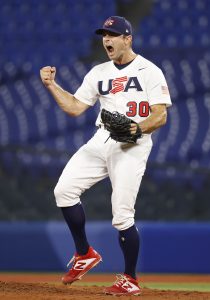July 10: The Rays have officially announced that Franco and Kiermaier have been placed on the 10-day IL, while lefty Jeffrey Springs has been placed on the 15-day IL due to right lower leg tightness. Righty Calvin Faucher was also optioned to Triple-A Durham. To take over those four spots on the roster, they have indeed recalled Raley and Aranda, as well as lefty Josh Fleming and righty Phoenix Sanders.
July 9: The Rays have lost two regulars to the 10-day injured list, as Wander Franco and Kevin Kiermaier have both been sidelined. As reported earlier, Franco left today’s game due to an injury in his right hand and wrist area, and manager Kevin Cash told reporters (including Marc Topkin of the Tampa Bay Times) that the initial diagnosis is that the injury is related to Franco’s hamate bone. Franco will visit doctors on Monday to determine the extent of the problem, and if surgery is required, he could miss roughly 6-8 weeks.
Franco had to be removed after his very first at-bat, a first-inning strikeout against Hunter Greene. On the second-last pitch of the plate appearance, Franco looked shaken up after fouling off a Greene fastball, and he was replaced in the field for the bottom of the inning.
Kiermaier played most of Saturday’s 5-4 loss to the Reds, as the center fielder was replaced for a pinch-runner after singling in the ninth inning. During the game, however, Kiermaier experienced more discomfort in his left hip — that same issue forced Kiermaier to the IL in late June, though he missed only the minimum 10 days before being activated.
Given the recurring nature of the hip problem, it seems likely that Kiermaier will miss more than 10 days, though the upcoming All-Star break could cover four days of that IL stint. Unless the Rays want to monitor Kiermaier to ensure that the hip soreness is entirely behind him, Kiermaier could be activated as early as July 22, when the Rays kick off their second half with a series in Kansas City.
Even if Franco can avoid surgery, he’ll still need at least a few weeks of recovery time. The second-year star has hit .260/.308/.396 over 247 plate appearances this season — still above-average (1o4 wRC+) production, but naturally a letdown given the high expectations created by Franco’s top-prospect status and excellent 2021 rookie season. Franco got off to a great start before quad injuries hampered his play in May, and that quad problem eventually sent him to the IL for four weeks.
Topkin writes that outfielder Luke Raley and infielder Jonathan Aranda are likely to be called up to replace Franco and Kiermaier on the active roster. Aranda made his MLB debut in cup-of-coffee fashion earlier this season, playing in two games. He’ll likely step into Taylor Walls’ utility infield role, as Walls will probably resume everyday shortstop duty (as he did during Franco’s last IL stint).
Raley is also a left-handed hitting outfielder, so in that sense, he’s an easy replacement for Kiermaier in Tampa Bay’s outfield mix. However, there’s obviously no way to easily replace Kiermaier’s all-world defense, though backup Brett Phillips is a solid defender in his own right (even if right field is Phillips’ best outfield position from a glovework standpoint). Phillips and Josh Lowe are the likeliest candidates to handle center field while Kiermaier is out, and Vidal Brujan also figures to chip in up the middle. Manuel Margot is out until at least late August due to a patellar tendon strain, and while the Rays are optimistic Margot will play again in 2022, anything he can contribute going forward might be seen as a bonus.
While neither Franco or Kiermaier have excelled at the plate this season, their twin absences will likely only intensify the Rays’ already clear need for more hitting help at the deadline. Especially if Franco is sidelined until September, Tampa will need more consistent production from the lineup if the team is going to both qualify for the postseason and then be legitimate contenders in October. As usual, the Rays aren’t likely to break the bank on a new acquisition, but position-player depth (whether an everyday name or a multi-positional part-timer) certainly seems like a priority.
